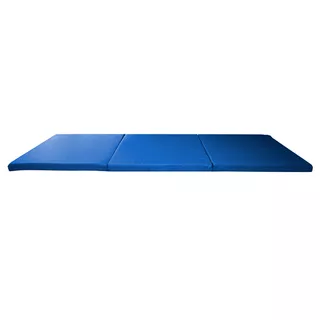Folding Gymnastics Mat inSPORTline Pliago 180x60x5
111,60 €
In Stock
Compared products
A gymnastics mat is one of the most essential training accessories. It can be used for gymnastics and athletics, as well as various martial arts and other sports. The purpose of a gymnastics mat is to serve as a landing surface that prevents you from getting injured. Because they are used in a number of sports that significantly differ from each other, there are several types of this accessory available.
We choose gymnastics mats according to:
Sports Activity
Material Used
The mats differ mainly in the surface material. We offer 3 basic options:
The absolute majority of mats are filled with enforced long-lasting foam.
Mat Thickness
Ideal mat thickness depends on whether the mat is used for landing, exercising or both.
Surface Treatment
The surface can be:
Some types of mats have enforced corners that allow them to maintain a better shape and protect them from side impacts.